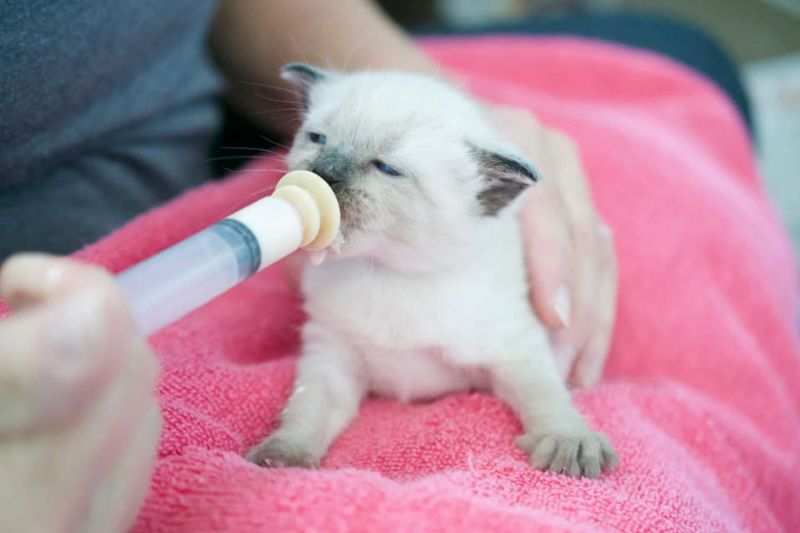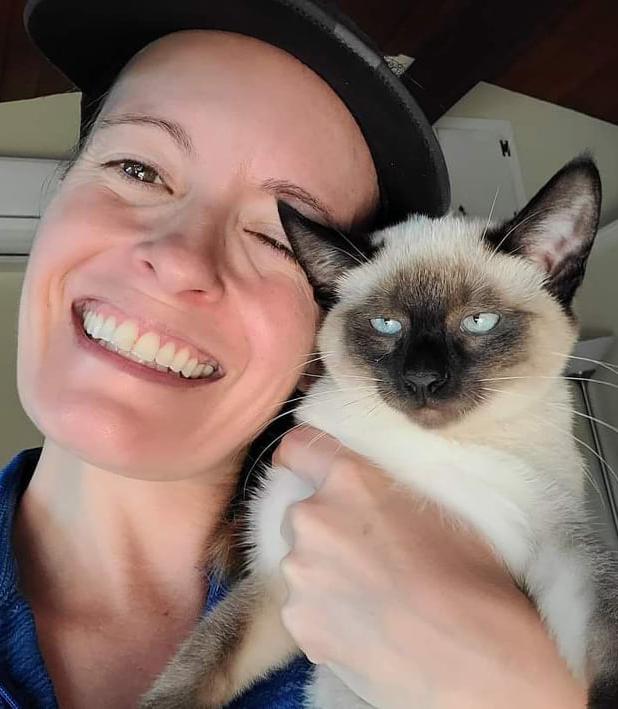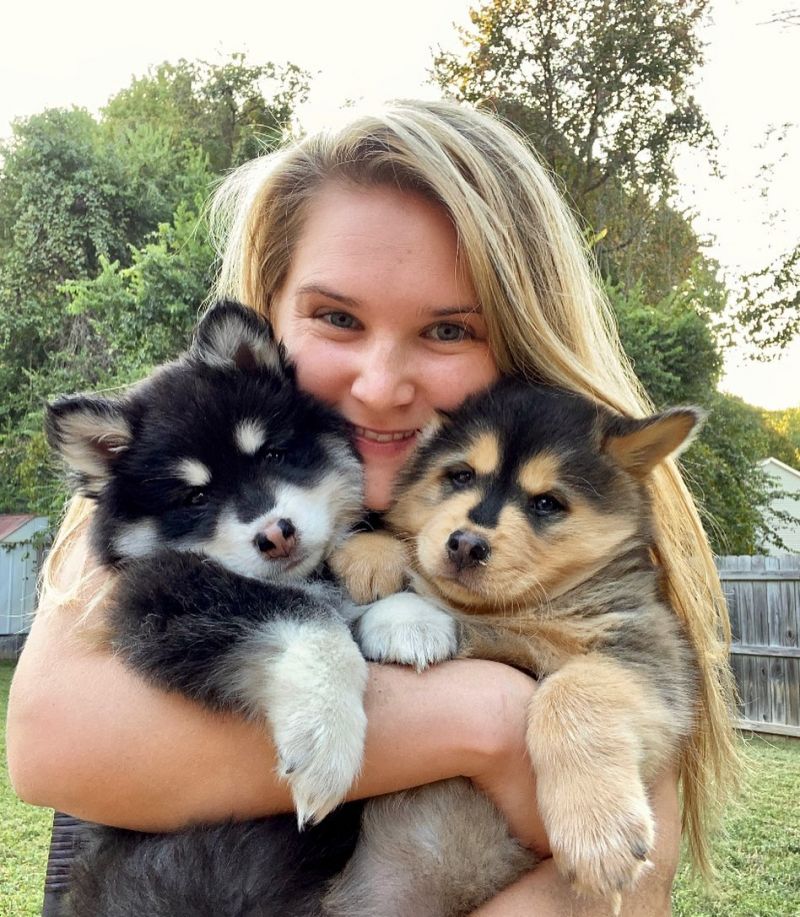Blog: The invisible labor of foster care
Two longtime caregivers share tips for expanding, supporting and retaining your foster volunteers
October 19, 2021

We’ve seen a surge of foster care programs in the animal welfare field, and that’s cause for serious celebration. At the same time, we hear from numerous shelters and rescues that are struggling to retain their experienced foster parents, and this continues to be a barrier in our field’s ability to provide a home environment to as many animals as possible.
The shelter outreach team at Humane World for Animals has fostered hundreds of animals over the years. Lindsay specializes in cats and kittens and the occasional hospice dog (and lamb!) while Samantha does the really hard work of raising puppies.
We’re also the “perfect” foster homes on paper. Both of us are certified dog trainers. We can handle moderate medical responsibilities, we live in quiet neighborhoods, we don’t have breed restrictions where we live, we work from home, and our resident pups are as tolerant and social as they come.
But before you send us your requests to take on that litter of ringworm kittens or the large dog who may or may not want to eat a Chihuahua, know that like many foster parents who have been around awhile, we have strong boundaries and don’t say yes to every animal. We have to balance our desire to contribute to the greater good with the need to retain our sanity (and the drywall in our homes).

This was something we had to figure out on our own—through hard experience. Lindsay once fostered 92 kittens in a single year, and Samantha welcomed a constant stream of foster cats and dogs when she first began.
While it was emotionally rewarding to see animals progress and thrive under our care, there were also times when we felt like we were performing “invisible labor”—a term coined by sociologist Arlene Daniels in 1987 that’s most often used to describe unpaid (and unacknowledged) caregiving work.
The organizations we’ve fostered for clearly appreciated our work, but they sometimes made us feel that any request for help was a burden. We kept at it, but we understand why so many volunteers, unsure how to set limits or ask for support, burn out and quit.
Of course, shelter and rescue staff face their own time and budget constraints. But to prevent high turnover in our foster care ranks, we as a field can find ways to better support our invaluable partners in lifesaving. If you haven’t had the chance to ask your foster parents what would truly support them in the long run, here’s a list from two longtime caregivers of what our dream foster assignments would include.
Lindsay once fostered 92 kittens in a single year, and Samantha welcomed a constant stream of foster cats and dogs when she first began.
A small allowance. Even if you provide supplies and medical care, there will be times when we can’t get to the shelter 30 minutes away and need to grab food or litter at the nearest grocery store. We’re constantly buying new baby foods and enticing treats to win over animals, train them and keep them entertained. Add in supplies to litter train puppies (yes, that’s a thing!), or samples of different flooring for kittens and puppies to experience during critical development phases, and we easily spend hundreds of dollars on foster animals each year. Keeping track of expenses can be cumbersome, especially when we’re fostering several animals; a stipend system would be easier for us to manage than a reimbursement process. If a stipend isn’t feasible, a gift card to a pet supply retailer will do the trick.
Stipends can also help recruit and retain caregivers who have plenty of love, but little cash, to spare, allowing people from all socioeconomic levels to participate in animal welfare work. If you can’t pay folks to foster (which we know is a barrier for many organizations), try to solicit in-kind donations to offset the costs, or be clear with your foster parents that they may incur unreimbursed expenses.
Behavioral support. There are times when we’d like to take our own dogs for a hike without worrying about adding a foster dog to the mix. Send us one of your experienced dog walkers a few times a week to wear out the foster dog so we can focus on the rest of our lives. A tired dog will also make our behavior modification work easier.
Asking someone to take an adolescent dog who is waiting on an ACL repair? Have volunteers drop off premade puzzle toys. Or take an idea from Pima Animal Care Center in Arizona and offer free daytime board and training during the work week to foster parents. (Just remember that getting to the shelter is a barrier for many folks.) If a behavioral challenge is above the experience level of your staff and volunteers, connect us with a veterinary behaviorist or ask a certified professional dog trainer or cat behaviorist to come to our homes.

Coverage when we’re away. When Lindsay travels, she has an amazing pet sitter who cares for both her resident and foster animals, which allows her to foster even when she knows she’ll be away. (Although it’s one thing to ask a pet sitter to care for one additional cat and quite another to expect them to care for a mom dog and eight puppies.) Sam, on the other hand, has to turn down requests to foster young puppies if she knows she’ll be away before the pups are done nursing and able to leave mom. Enlisting volunteers to help with in-home coverage will enable us to foster even when we have upcoming travel plans, avoid the constant back and forth of foster animals to the shelter, and keep animals progressing toward adoption, without the stress of changing their environment.
Convenient medical appointments. We know the animals in our homes may need vaccinations, spay/neuter surgeries or a checkup with a behavioral specialist. Providing appointments that work with our schedules is a game changer. Even better, whenever possible, bring the appointment to us. Need to vaccinate seven puppies? Send over a vet tech who can do a quick exam at the same time.
If, like many shelters and rescues, you’re seeing serious delays in spay/neuter and other medical appointments, let us know that ahead of time. While some volunteers struggle emotionally to move their foster pets along, we’re not ashamed to say we’re the opposite. By the time our foster kittens and puppies reach adoptable age, we’re counting down the days until someone else can scoop the litterboxes and fantasizing about how much cleaning (and sleeping) we’ll do when they’re gone. If you’re expecting a delay in the normal turnover of foster animals, communicate that so folks can plan. With behavioral cases, set benchmarks and schedule check-ins so foster parents aren’t left caring for an animal for months without a clear plan.
We have to balance our desire to contribute to the greater good with the need to retain our sanity (and the drywall in our homes).
Forced breaks. Sometimes you have to protect us from ourselves. When you rely on us to request a break from fostering, we have to do the emotional labor of saying no to the animals and to shelter staff—something that even people like us who strive for strong boundaries can struggle with.
By requiring breaks of foster parents and encouraging them to ask for more time if needed, you’re shifting the power dynamic. You’re also preventing common burnout when people, particularly new volunteers, commit to a continuous stream of foster assignments in an effort to help. Each foster experience is different, so plan on longer breaks for volunteers who take on more labor-intensive or challenging cases.
Tangible appreciation. Fostering is a labor of love, a way we can directly help animals and shelters in our community. The right kind of support can allow us to keep doing this important service without the risk of burning out.
For your tried-and-true foster parents, consider a meaningful gift each year. Do you have someone who raised four litters of puppies for you? Consider a gift card for a home cleaning service. Do you have a cat whisperer in your network who has three cats of their own? Consider a fancy cat tree to replace the one the foster kittens destroyed. When planning your fundraising auctions or creating your online wish lists, include things donors can purchase for your foster parents.
This list isn’t all-inclusive or meant to push the stress of fostering onto the backs of shelter employees who are trying their best with limited time and budgets. But fostering is the future of our field. If we can find meaningful ways to support caregivers, animals with all kinds of needs can experience the love of a foster parent and the comfort of a (mostly destroyed) couch.

